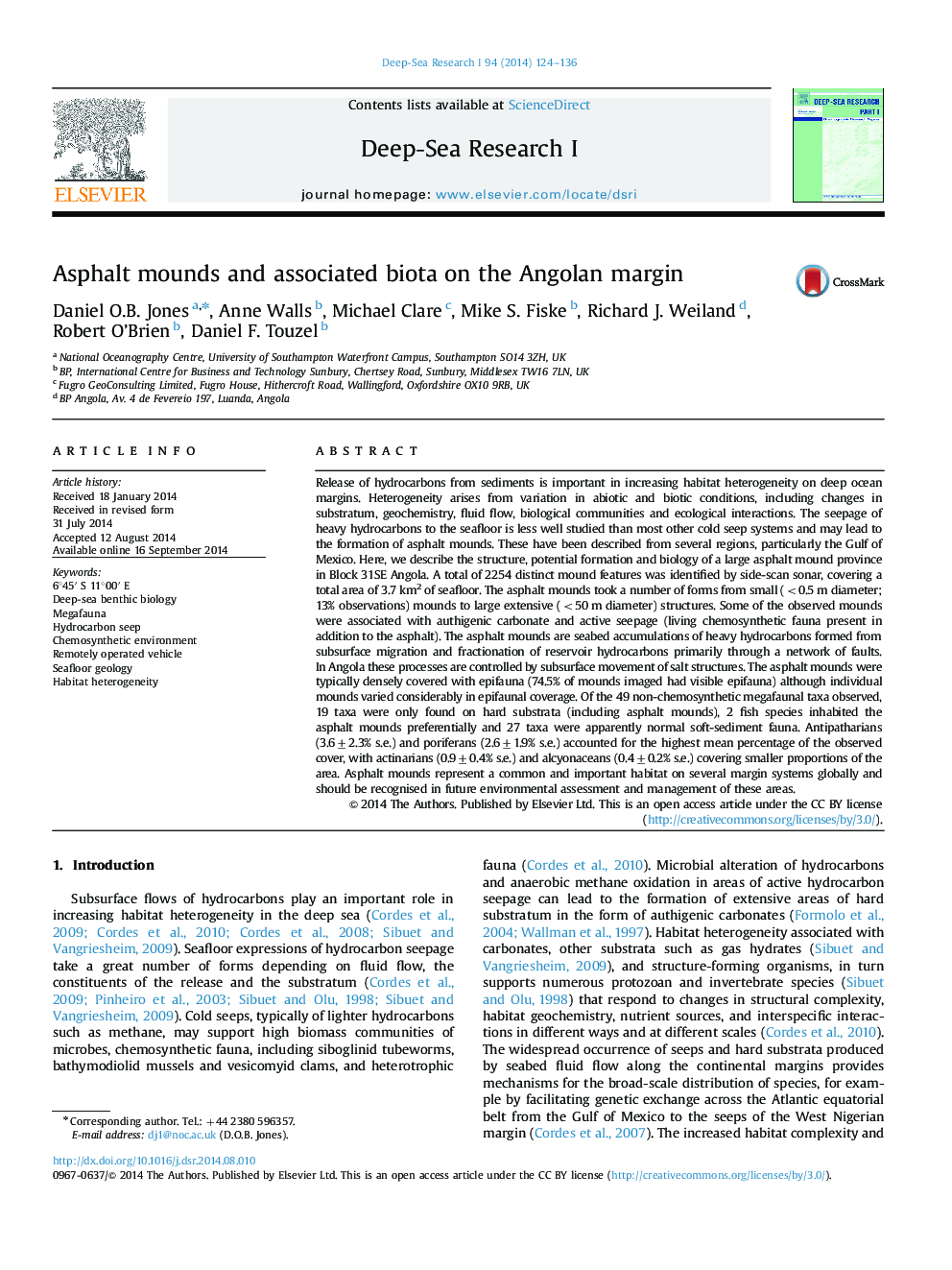| کد مقاله | کد نشریه | سال انتشار | مقاله انگلیسی | نسخه تمام متن |
|---|---|---|---|---|
| 6383651 | 1626336 | 2014 | 13 صفحه PDF | دانلود رایگان |
- 2254 asphalt mound features identified on Angolan Margin (total area of 3.7Â km2).
- Formed from seepage of hydrocarbons associated with subsurface salt structures.
- Typically densely covered with epifauna, 21 megafaunal taxa identified.
- Some had authigenic carbonate and active seepage (with living chemosynthetic fauna).
- represent a common and important habitat on several margin systems globally.
Release of hydrocarbons from sediments is important in increasing habitat heterogeneity on deep ocean margins. Heterogeneity arises from variation in abiotic and biotic conditions, including changes in substratum, geochemistry, fluid flow, biological communities and ecological interactions. The seepage of heavy hydrocarbons to the seafloor is less well studied than most other cold seep systems and may lead to the formation of asphalt mounds. These have been described from several regions, particularly the Gulf of Mexico. Here, we describe the structure, potential formation and biology of a large asphalt mound province in Block 31SE Angola. A total of 2254 distinct mound features was identified by side-scan sonar, covering a total area of 3.7 km2 of seafloor. The asphalt mounds took a number of forms from small (<0.5 m diameter; 13% observations) mounds to large extensive (<50 m diameter) structures. Some of the observed mounds were associated with authigenic carbonate and active seepage (living chemosynthetic fauna present in addition to the asphalt). The asphalt mounds are seabed accumulations of heavy hydrocarbons formed from subsurface migration and fractionation of reservoir hydrocarbons primarily through a network of faults. In Angola these processes are controlled by subsurface movement of salt structures. The asphalt mounds were typically densely covered with epifauna (74.5% of mounds imaged had visible epifauna) although individual mounds varied considerably in epifaunal coverage. Of the 49 non-chemosynthetic megafaunal taxa observed, 19 taxa were only found on hard substrata (including asphalt mounds), 2 fish species inhabited the asphalt mounds preferentially and 27 taxa were apparently normal soft-sediment fauna. Antipatharians (3.6±2.3% s.e.) and poriferans (2.6±1.9% s.e.) accounted for the highest mean percentage of the observed cover, with actinarians (0.9±0.4% s.e.) and alcyonaceans (0.4±0.2% s.e.) covering smaller proportions of the area. Asphalt mounds represent a common and important habitat on several margin systems globally and should be recognised in future environmental assessment and management of these areas.
Journal: Deep Sea Research Part I: Oceanographic Research Papers - Volume 94, December 2014, Pages 124-136
